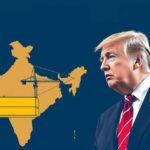2024 Yearender: Economic Uncertainties Ahead with Trump’s Return
The anticipated second administration of Donald Trump presents considerable economic uncertainties for India, primarily through disruptions in global trade and currency markets. As India braces for potential changes in foreign investment dynamics and economic policy adjustments, there are critical questions regarding domestic demand, tax reforms, and the revival of private capital expenditure.
The forthcoming administration of Donald Trump, assuming office on January 20, 2025, raises significant concerns for global capitalism and India’s economic landscape. Trump’s history of implementing substantial tariffs as economic leverage threatens to destabilize the established international economic order. This potential shift is expected to have repercussions on the Indian economy, primarily through second-order effects derived from changes in global trade dynamics and production strategies due to the evolving China+1 phenomenon.
The volatility anticipated from a Trump presidency could complicate India’s economic positioning, particularly in terms of attracting foreign investment necessary to address its substantial trade deficit. A stable capital inflow is crucial for maintaining foreign exchange reserves and ensuring a stable rupee, both of which have posed challenges for the Reserve Bank of India in 2024. Moreover, should Trump engage in conflicts with the US Federal Reserve or implement tariffs that provoke domestic inflation, the ramifications for India’s economy could be severe.
Domestically, the economic policy landscape in India appears set to prioritize growth amidst a backdrop of underperformance, potentially receding below the 7% growth threshold as post-pandemic demand wanes. With only one significant state election occurring in 2025 (Bihar), the expected budget will likely favor fiscal consolidation over massive stimulus measures, necessitating a greater reliance on private sector investment.
A revival in private capital expenditure—a consistent challenge for the Indian economy—remains contingent upon adequate demand stimulation. Current economic indicators suggest a K-shaped recovery where wealth disparity poses obstacles to widespread growth. Discussions amongst key economic policymakers suggest a recognition of an imbalance between capital and labor, raising questions about potential reforms to tax structures or Goods and Services Tax (GST) modifications aimed at redistributing economic benefits.
Additionally, export activities could contribute to economic revitalization. However, growing mercantilist tendencies in the US and other advanced markets raise concerns about their impact on India’s export demand. The Indian government’s approach to geopolitical relations, particularly with China, may also influence prospects in the new-age electronics sector, which presents significant export potential.
In summation, myriad factors will influence India’s economic trajectory in 2025, chiefly in response to external shocks or structural economic challenges. The ongoing stability of macroeconomic conditions belies the necessity for responsive governmental strategies—whether cautious or ambitious in their execution. The ultimate decision on navigating these complexities is decisively political, as policymakers weigh the merits of incremental versus robust intervention in the economy.
As we conclude 2024, there are palpable worries regarding the economic conditions influenced by the anticipated return of Donald Trump as US President. His proposed policies, particularly concerning tariffs and trade, suggest a shift towards a mercantilist approach, potentially disrupting global economic stability and impacting nations like India, which rely on foreign investments and stable trade relations. This article delves into the challenges these developments pose to India’s economic landscape as it prepares for the upcoming year.
In conclusion, the potential impact of Donald Trump’s imminent presidency is poised to introduce significant uncertainties for the global and Indian economies in 2025. The reliance on foreign investment, the intricacies of domestic growth strategies, and trade relationships will dictate India’s economic policies as they confront these emerging challenges. Ultimately, the direction taken will hinge on how policymakers choose to navigate the complexities of an evolving economic landscape.
Original Source: www.hindustantimes.com








Post Comment